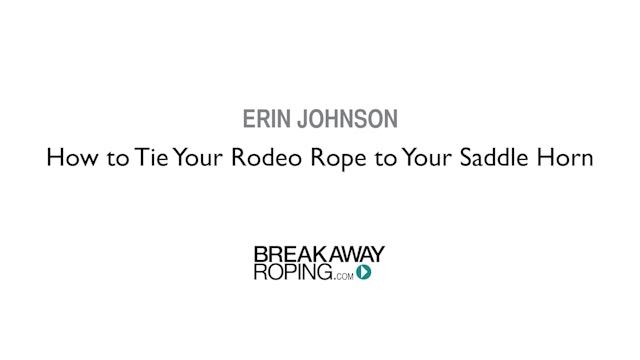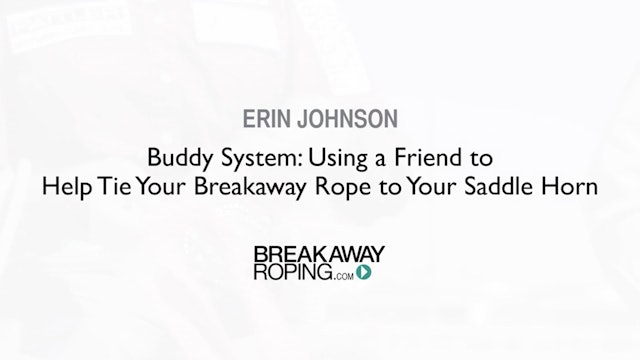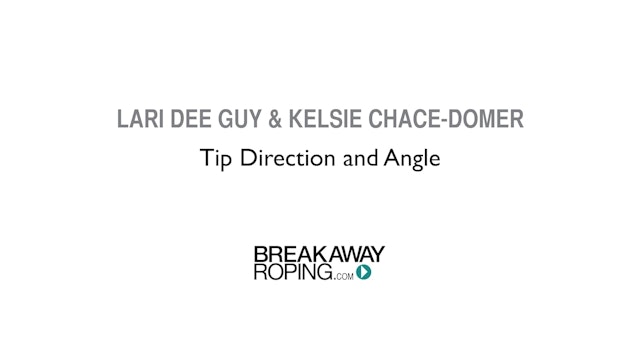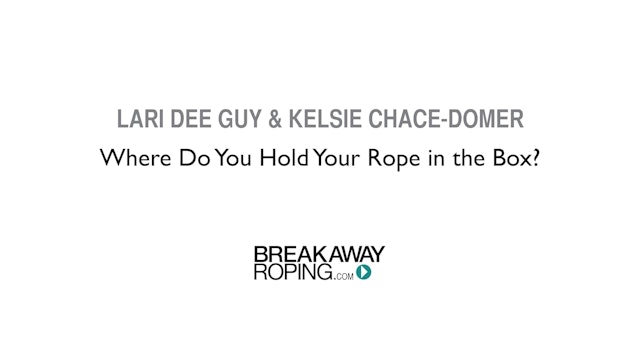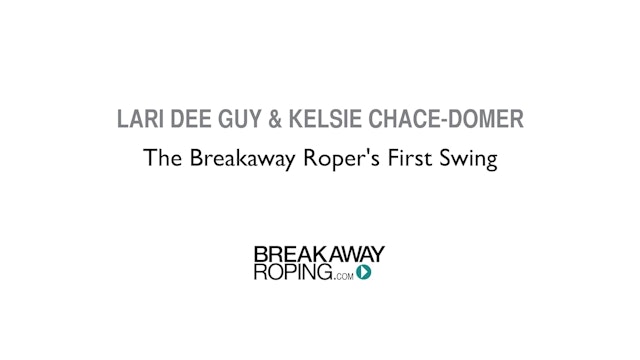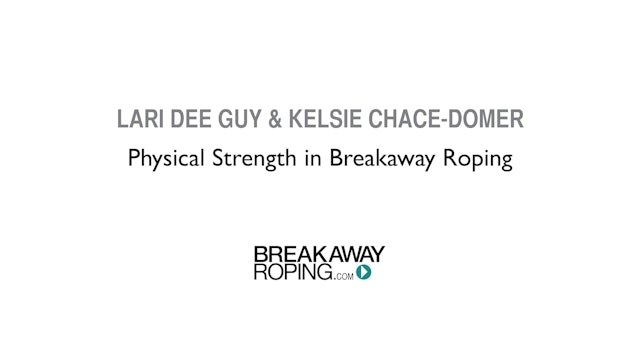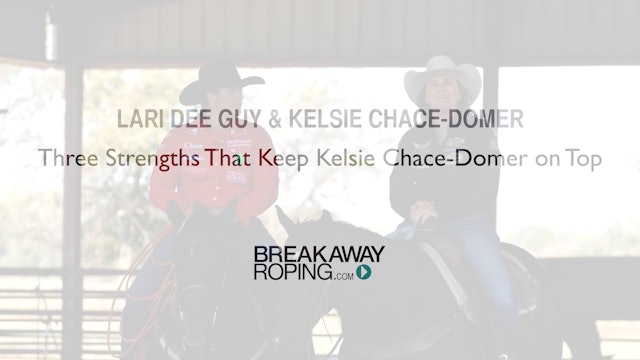Breakaway Fundamentals
The Breakaway Fundamentals video series on Roping.com provides essential training and instructional content for aspiring breakaway ropers. Featuring insights from expert ropers like Lari Dee Guy and Hope Thompson, the series covers fundamental techniques such as judging calves, managing ground conditions, effective use of equipment, and developing a winning mindset. Whether you're a beginner or looking to refine your skills, these videos offer valuable lessons on everything from rope handling to mental preparation, helping you build a strong foundation in breakaway roping.
-
Breakaway Prospect Feel
How should your breakaway prospect feel in the bridle? Linsay Sumpter reviews how a barrel prospect needs to adjust to breakaway roping.
-
Body Position in the Saddle
What position should you keep in the saddle while breakaway roping? Linsay Sumpter reviews how you should sit, where you should put your feet and how you should rock your hips in the saddle.
-
The Stop in a Breakaway Prospect
How should a breakaway prospect stop? Linsay Sumpter breaks down body position and cues through the stop.
-
5 Key Elements of Successful Breakaway Roping: Position
Position. Scoring. Power. Tip. Follow-Through. This video breaks down the position you need to ride for the highest percentage shot.
-
5 Key Elements of Successful Breakaway Roping: Scoring
Scoring is the second step in the 5 steps to success in breakaway roping. In this video, Linsay Sumpter explains how scoring actually works and how to be successful at it.
-
5 Key Elements of Successful Breakaway Roping: Power
You put power on your swing by pulling your rope behind your head. Linsay Sumpter breaks down how to swing your breakaway rope for success.
-
5 Key Elements of Successful Breakaway Roping: Tip
How you control your tip in breakaway roping affects how you rope the neck. Linsay Sumpter explains how to be successful with tip control and provides a drill to work on that.
-
5 Key Elements of Successful Breakaway Roping: Follow Through
A correct follow through is important to master a bell-collar catch tight around the neck. Linsay Sumpter demonstrates how a good follow through figure-eights around the calf for success in breakaway roping.
-
Breakaway Roping Rein Length
How short should you have your reins as you back into the corner? Linsay Sumpter breaks down this often overlooked detail.
-
Safety Hazards in Breakaway Roping
While breakaway ropers don't lose fingers at the same rate as team ropers, it's still a possibility. Linsay Sumpter talks about how unsafe a horn knot can be and how to avoid problems.
-
The Most Important Skill to Learn for Breakaway Roping
If you are new to breakaway roping, the first skill Lari Dee Guy suggests you master is holding your rope correctly. Make sure you can handle your rope, know what size coils you need and what size loop to have before you start practicing on the dummy.
-
Changing the Game Plan After Missing Your Throw
Sometimes the game plan doesn't always work out. Erin Johnson explains how to change up your game plan in the practice pen after missing a throw to make a rodeo run to make the most out of your practice.
-
How to Tie Your Rodeo Rope to Your Saddle Horn
Erin Johnson shows breakaway ropers how to tie their rodeo rope on to their saddle horn for competition.
-
Buddy System: Using a Friend to Help Tie Your Breakaway Rope to Your Saddle Horn
Tying your rodeo rope on to your saddle horn can be challenging. Erin Johnson, with the help of Linsay Sumpter, demonstrates how to use a friend to securely tie on your rope.
-
What Makes a Good Practice
Madison Outhier explains that there are several components a good practice. She discusses some of the skills she likes to practice and what she is looking for while she is in the practice pen.
-
Tip Direction and Angle
Kelsie Chace-Domer has a unique ability to keep her rope high leaving the corner. Lari Dee Guy and Chace-Domer discuss how that affects her catch percentages and how she uses her horse to help her get her swing up.
-
Where Do You Hold Your Rope in the Box?
Breakaway ropers have to throw FAST, so how they start their rope in the box matters. Lari Dee Guy and Kelsie Chace-Domer talk about the different ways ladies start in the box and how they start their swings from the corner to get the most power and momentum.
-
The Breakaway Roper's First Swing
The breakaway ropers' first swing should be wide over the chute in order to get momentum and power. Lari Dee Guy and Kelsie Chace-Domer explain how Kelsie's first swing is so dominant.
-
Physical Strength in Breakaway Roping
Kelsie Chace-Domer uses her athleticism and strength to define her style of breakaway roping. Chace-Domer and Lari Dee Guy analyzes how are physical strength keeps her in good position throughout a run no matter what the calf or the horse does.
-
Three Strengths That Keep Kelsie Chace-Domer on Top
Kelsie Chace-Domer has three key elements to her breakaway roping that keep her at the top of her game. Here's what they are and why they help set her apart.
-
The Barrier System
Linsay Sumpter breaks down the barrier system used at rodeos.
-
Finding a Pusher when you Get to a Rodeo
To get the best start in breakaway roping you'll want someone in the chute with the calf to help guide them out of the chute. Linsay Sumpter explains how to find someone to push your calf at the rodeo.
-
How to Check the Draw at a Rodeo
You're not sure when you drew up at the rodeo, or even which calf you drew? Linsay Sumpter explains how breakaway ropers can check the draw at the rodeo.
-
The Breakaway Roper's Responsibility at the Rodeo
You are responsible for more than just making sure you're in the box when your name is called at the rodeo. Linsay Sumpter breaks down all of the responsibilities breakaway ropers have.















